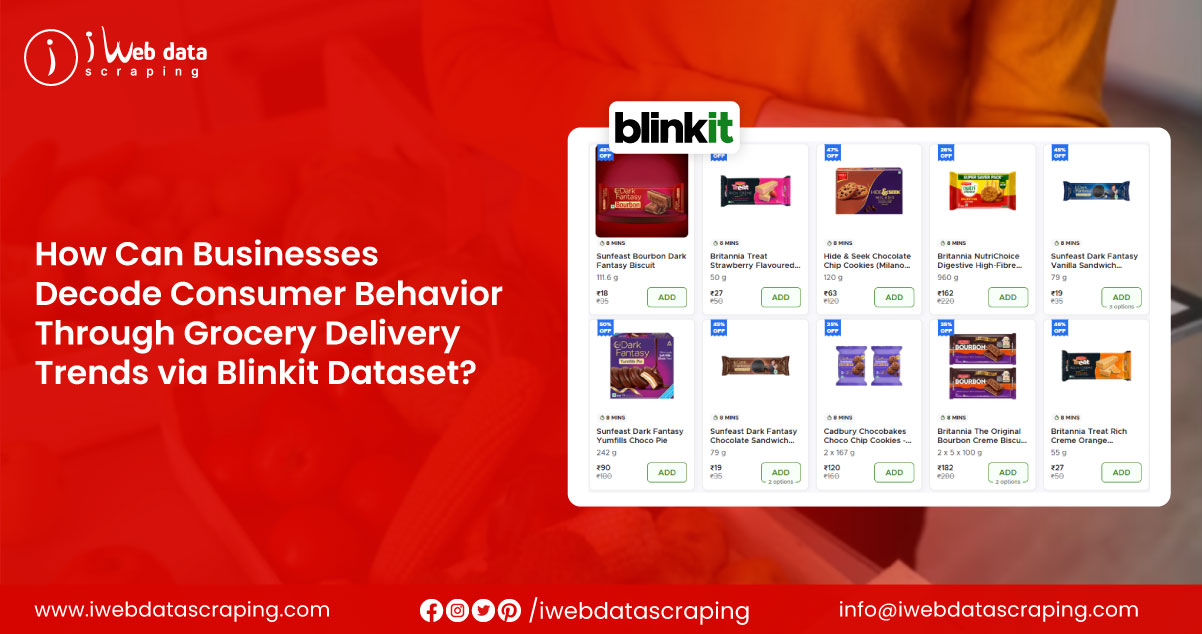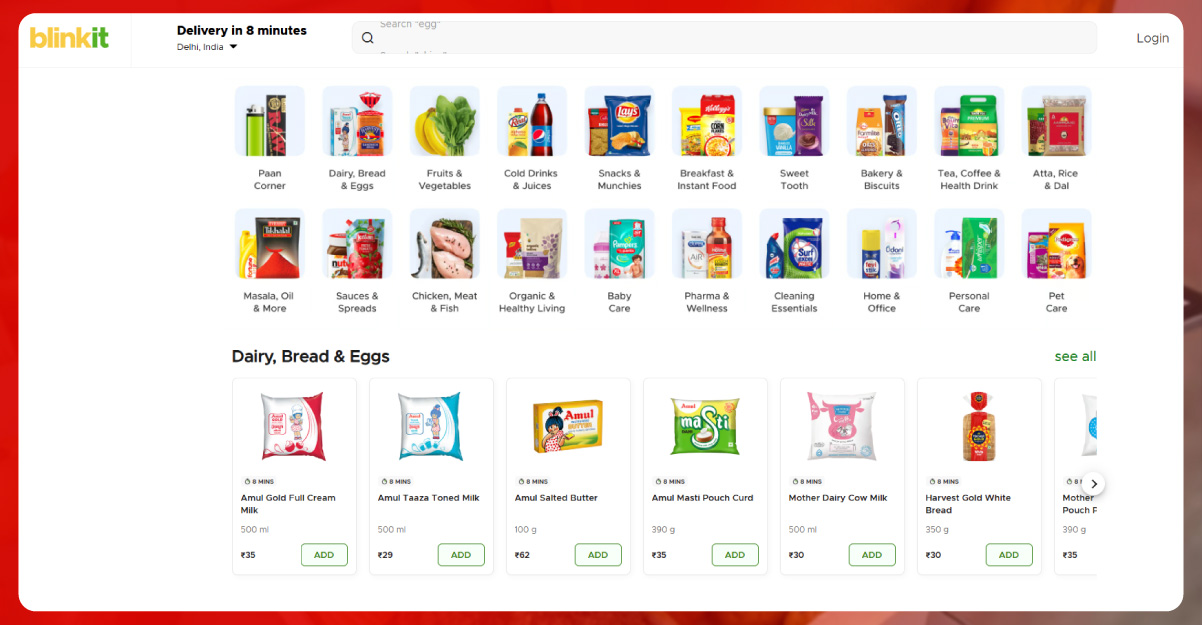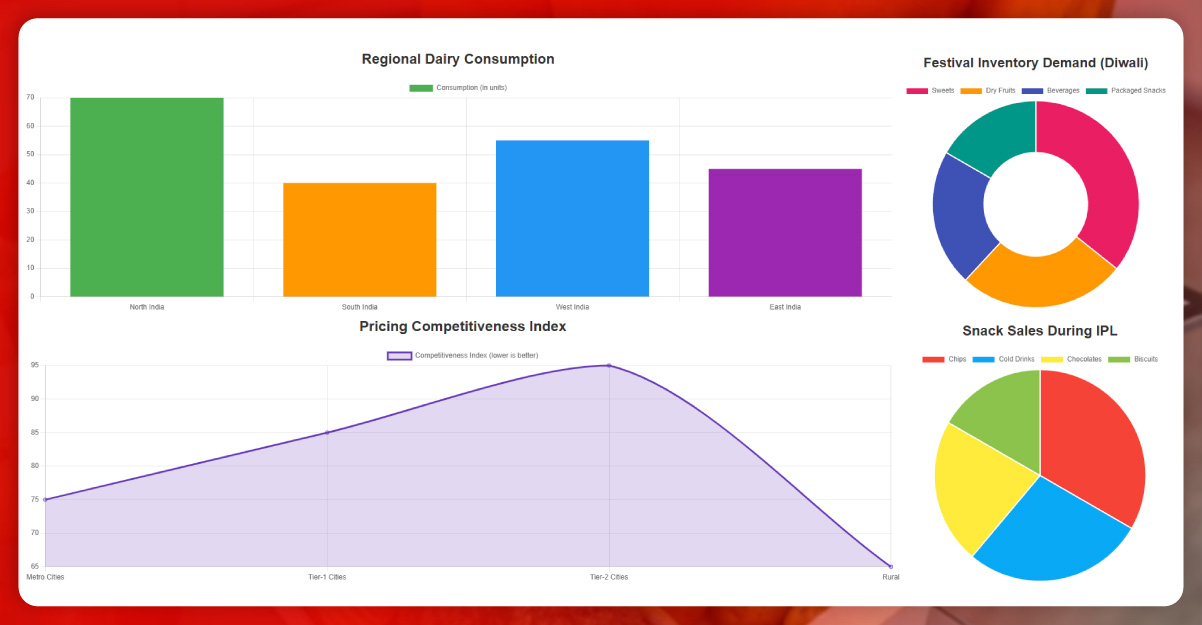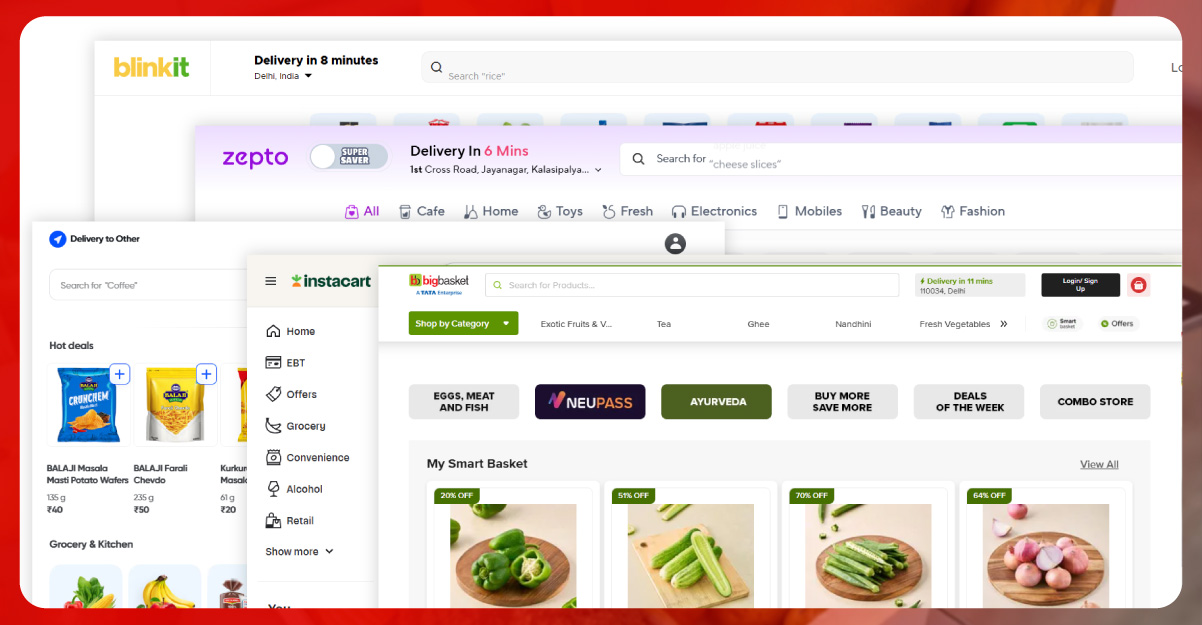
In India’s fast-paced retail sector, Grocery Delivery Trends via Blinkit Dataset have become a cornerstone for understanding consumer habits, market movements, and supply chain efficiency. The rise of quick-commerce has changed not just how consumers shop but also how brands plan their production, marketing, and distribution. Blinkit, one of the earliest pioneers in this segment, has created a massive dataset that provides real-world evidence of evolving grocery consumption.
When studied carefully, datasets from Blinkit act like a mirror reflecting urban India’s lifestyle. From what people order late at night to how seasonal festivals influence demand for dry fruits, the numbers tell a story of cultural shifts and consumer priorities. The Blinkit Grocery Store Dataset India serves as a critical foundation for companies that want to decode customer preferences, identify hot-selling items, and streamline supply chains to align with demand fluctuations.
For researchers and businesses alike, Scraping Blinkit data for Indian grocery insights offers a reliable way to understand how quick-commerce is reshaping India’s grocery market. By analyzing structured data across timeframes and locations, brands can anticipate consumer needs and stay ahead in one of the world’s most dynamic grocery delivery landscapes.

Blinkit’s growth journey demonstrates how consumer convenience can reshape entire industries. By promising deliveries within minutes, Blinkit has moved grocery shopping from a planned weekly task to an impulse-driven daily activity. This change is not merely about speed—it is about how urban India now views accessibility, variety, and lifestyle convenience.
By choosing to Extract Blinkit Grocery Delivery data, businesses can examine how demand patterns differ across time and space. For example, data may reveal that consumers in Tier-1 cities prefer premium snacks and beverages, while those in Tier-2 cities show a higher demand for staples such as rice, wheat, and edible oils. With such insights, brands can ensure product visibility where it matters most.
Quick-commerce is no longer a niche—it is mainstream. Blinkit, Zepto, and Instamart are racing to capture consumer loyalty by offering unparalleled speed. The shift is not just technological but behavioral. Consumers today expect groceries to arrive as quickly as their online ride-hailing services.
By using Web Scraping Blinkit store and city coverage data, businesses can track where Blinkit expands its presence. This is vital because entry into new markets often signals a shift in urban demand. For instance, if Blinkit opens more dark stores in smaller cities like Indore or Lucknow, FMCG brands can infer that demand is growing beyond metros. Such coverage data helps strategists prioritize investments in new regions.
Every order on Blinkit generates valuable information: product selection, quantity, pricing, time of purchase, and delivery time. Together, these transactions form a dataset that can be mined for insights into consumer psychology and purchasing power.
When analysts Scrape Blinkit Grocery Store Locations Data, they can map how Blinkit aligns its dark store network with consumer density. For example, high order volumes in Bengaluru’s IT corridors may lead to more localized stores near tech hubs. FMCG companies can utilize this information to optimize stock placement, ensuring that high-demand areas are consistently well-stocked.
Unlock powerful insights today—leverage Blinkit data scraping solutions to stay ahead in India’s fast-growing quick-commerce market.

For FMCG giants, data is no longer optional—it is the backbone of decision-making. With hyperlocal grocery data, companies can:
With the Blinkit Grocery Data Scraping API, real-time information flows directly into analytics platforms. This integration empowers companies to act instantly, rather than relying on outdated reports. For example, if sales of ready-to-eat meals spike in a metro city during weekdays, companies can adjust supply and advertising strategies in near real-time.
Indian cities differ drastically in culture, income, and preferences. Chennai may have a higher demand for rice and coconut-based products, whereas consumers in Mumbai tend to lean toward packaged snacks and ready-to-eat meals. Without data, these nuances remain invisible.
Through Scraping Blinkit Delivery Data Across India Markets, businesses can assess demand diversity. For instance, an FMCG company can discover that Bengaluru residents purchase organic vegetables at a higher rate, while Lucknow residents prefer bulk packs of grains. By understanding city-level differences, brands can personalize promotions and distribution networks to maximize sales.
Quick-commerce thrives on prediction, speed, and personalization. Blinkit’s dataset offers all three. Data helps platforms improve delivery logistics, reduce fulfillment costs, and enhance customer retention.
For businesses, this means Grocery Data Scraping Services are invaluable. With well-structured datasets, businesses gain visibility into price fluctuations, promotional offers, and even delivery timelines. For instance, a company studying order timing trends might learn that late-night orders peak for snacks and beverages—valuable knowledge for brands catering to youth demographics.

To fully understand Blinkit’s role, it must be compared with competitors such as Zepto, Swiggy Instamart, and BigBasket’s express delivery models. Each player has unique strengths: Zepto focuses on speed, Instamart emphasizes product variety, and BigBasket leverages long-term brand trust.
By studying Grocery and Supermarket Store Datasets, businesses can benchmark Blinkit’s prices, product categories, and delivery times against those of their rivals. This comparative analysis enables retailers to refine their strategies and maintain competitiveness in India’s crowded grocery delivery market.
The Blinkit dataset is not only a corporate asset but also a valuable academic and policy tool. Urban researchers can analyze consumption trends to measure the modernization of lifestyles. Economists can study the impact of quick-commerce on employment and supply chains. Policymakers can evaluate its influence on urban traffic congestion and sustainability.
By integrating Blinkit data into urban research, academics can build models that forecast food security, consumer spending, and urban infrastructure requirements. In this sense, grocery datasets are both socially relevant and commercially important.
Festivals like Diwali, Holi, or Eid transform grocery shopping behavior in India. Sweets, dried fruits, and beverages experience a skyrocketing demand during these weeks. Companies that monitor Blinkit’s datasets can track these demand spikes and plan logistics accordingly.
For example, if Diwali sales data shows that mithai orders increase by 250% compared to regular days, FMCG companies can ensure adequate stock levels in advance. By relying on granular datasets, businesses avoid missed opportunities during high-demand periods.
Despite its potential, scraping Blinkit’s grocery dataset involves technical and ethical challenges:
Partnering with trusted providers of Grocery Website Data Scraper solutions ensures businesses can overcome these hurdles effectively while maintaining compliance and data accuracy.

Looking ahead, grocery delivery in India will not only grow but transform further. Expect advancements such as:
In this environment, businesses must harness Quick Commerce Datasets to remain agile. Competitive advantage will depend not just on delivery speed but on data-driven foresight.
For FMCG brands, logistics providers, and retailers, structured datasets will continue to serve as the foundation of growth. Access to Quick Commerce & FMCG Data Extraction Services will ensure they stay competitive in India’s evolving retail revolution.
The Blinkit dataset offers a wealth of information on consumer lifestyles, delivery efficiency, and product demand across India. It is not just a record of transactions—it is a roadmap to the future of retail. By analyzing store-level data, delivery coverage, and seasonal demand spikes, businesses can create strategies that are responsive, data-driven, and highly effective.
Companies that embrace intelligent tools like a Grocery Website Data Scraper will be positioned to win in the quick-commerce race. The significance of Quick Commerce Datasets cannot be overstated—they help businesses navigate uncertainty, adapt to shifting consumer behavior, and optimize operational efficiency. Meanwhile, Quick Commerce & FMCG Data Extraction Services will emerge as critical enablers of real-time intelligence, ensuring brands are equipped for tomorrow’s challenges.
Experience top-notch web scraping service and mobile app scraping solutions with iWeb Data Scraping. Our skilled team excels in extracting various data sets, including retail store locations and beyond. Connect with us today to learn how our customized services can address your unique project needs, delivering the highest efficiency and dependability for all your data requirements.